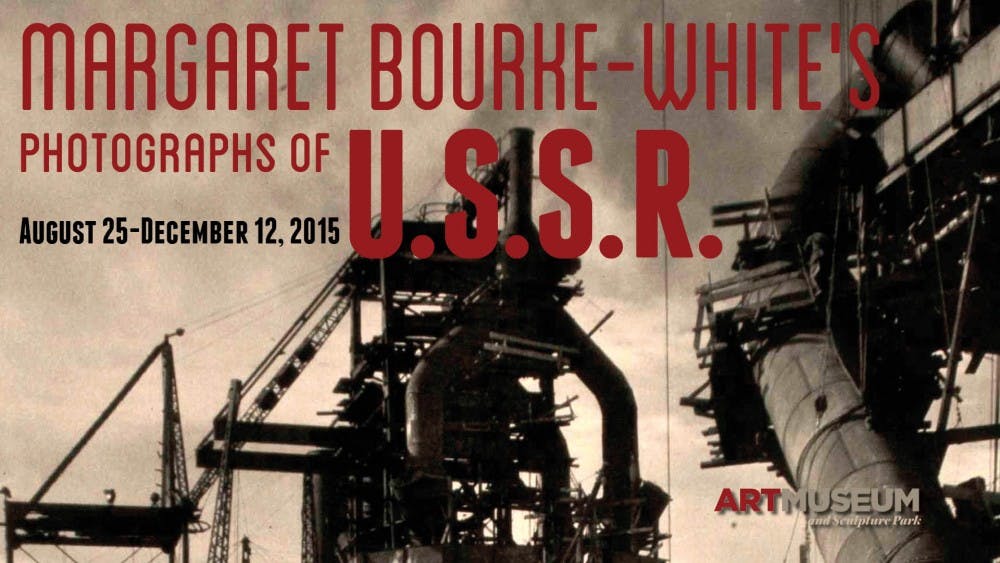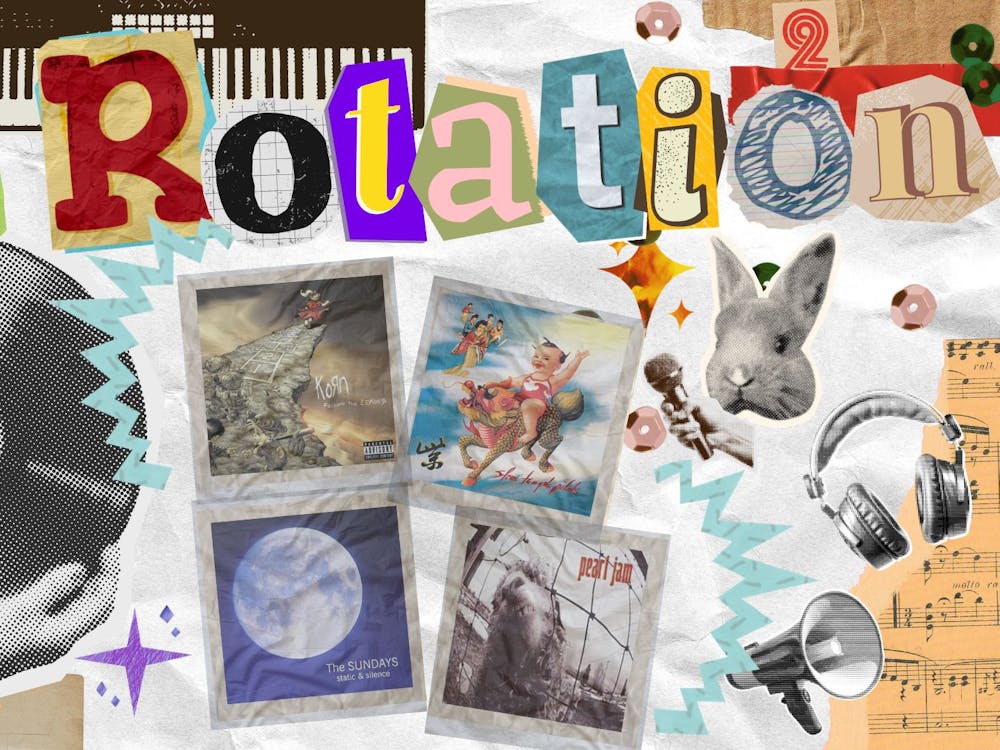By Casey Pritchard, The Miami Student
The photo, black and white, displays a group of children staring up at the camera with downturned mouths and dingy cups clutched in their hands.
Bob Wick, the Miami University Art Museum Director, and Kimberly Blake, who interned as a curator with Jason Shaiman, both pointed out the photo as I toured the exhibit.
Blake expressed surprise at the lack of childlike behavior in the picture.
"None are smiling," Wick notes.
You can find this photograph, titled, "Bolshevic Babies in the Nursery: Amo Automobile Factory," in Margaret Bourke-White's collection of photographs of the U.S.S.R. in the Miami Art Museum.
Bourke-White is not only famous for being a photojournalist, but also for being a tough female that was willing to sleep on the soppy ground during World War Two and endure the Dust Bowl in order to open the door to another culture.
These moments from the U.S.S.R are captured in a series of photogravures. A photogravure is a printmaking process where a copper plate is coated with a light-sensitive gelatin tissue and then etched, reproducing a high quality photo with fine detail. Only one thousand copies have ever been made of Bourke-White's photo, increasing their value.
All 24 photographs were donated to Miami by Mrs. Frances McClure.
As you enter the exhibit, you're brought back to the very beginning of Stalin's first five-year plan. Grimy faces fill up the frames, the subjects' emotions ranging from pride and determination to pessimism.
Alexa Del Riesgo, strategic communication intern for the Art Museum, was more moved by the pictures than she expected to be.
"It kind of took you back in time for a minute, to see how simply they lived," said Del Riesgo.
Enjoy what you're reading?
Signup for our newsletter
Through these photographs, Miami students can see that, in the beginning, the public did not see Stalin just for his bloodthirstiness and caterpillar-like mustache, but as a leader they were proud to work for.
"I look at [the photograph] and I see a young kid, who should have had other opportunities…[yet he sees] this whole effort to bring the U.S.S.R. in the twentieth century," said Wick.
Rather than pity the people of the U.S.S.R, Bourke-White's photographs push us to admire their diligent effort to industrialize.
Instead of black-and-white, textbook-like descriptions of the U.S.S.R., Bourke-White's photos leave us to witness their progression into industrialism. We are left to interpret the images ourselves, and watch as old Russia begins to clash with a 20th century makeover.
Blake explains, "[It] shows us a unity perspective that's not just dry information."
Both Blake and Del Riesgo are earning class credit by interning for the museum. The museum's resources go beyond just pretty pictures, but offer experience and resources that can be later used by students when looking for a job. A variety of majors can be involved in the museum's upcoming exhibits, so be sure to contact the museum to learn how you can get involved and earn credits.
The exhibit is free, and will be open until Dec.12. The next lecture is at 6 p.m., Oct. 21, at the Art Museum.




